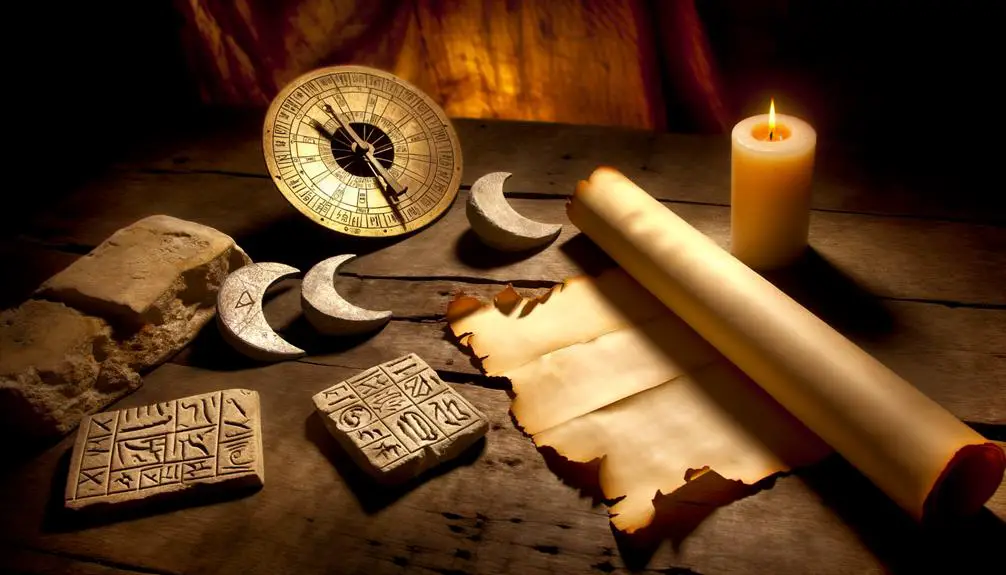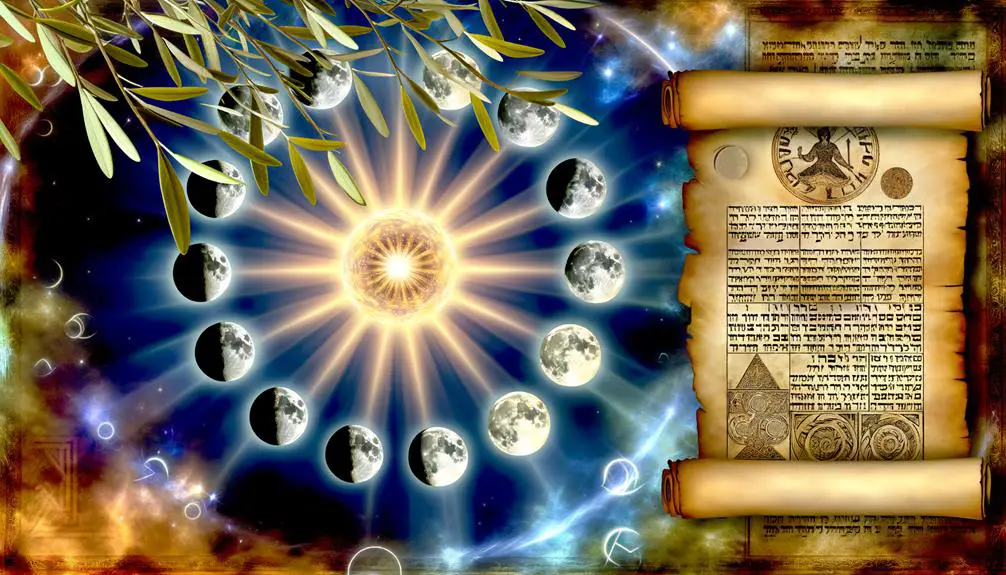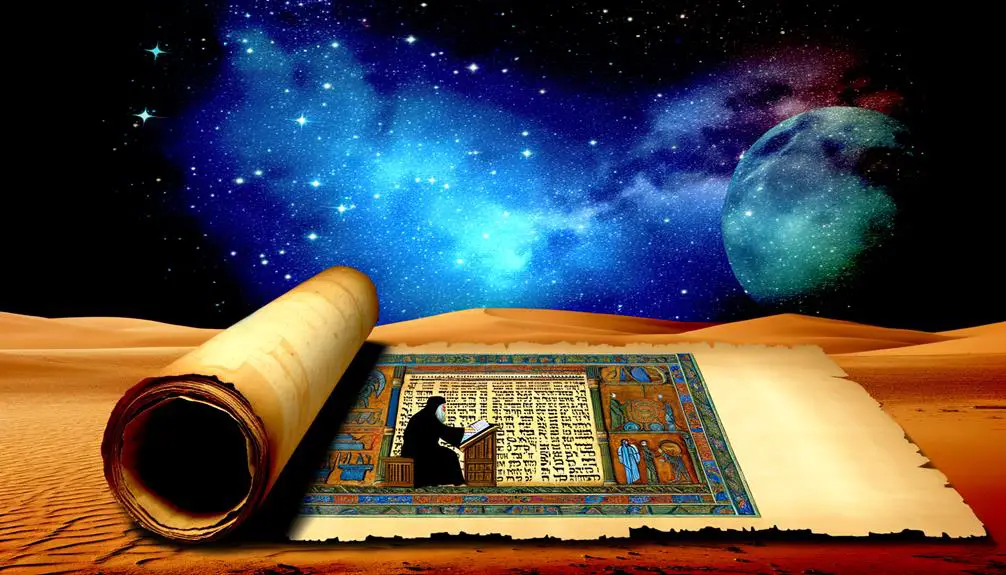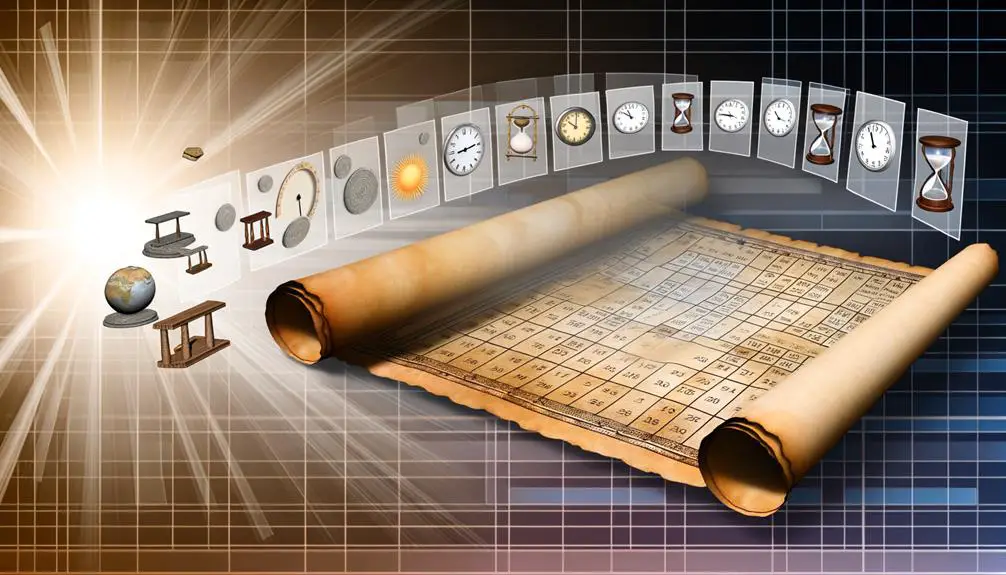Find out the intriguing way the Bible measures a year and why it matters in understanding ancient and modern perceptions of time.

How Long Is a Year in the Bible
Have you ever wondered how long a year is in the context of the Bible? It's a question that invites you to explore the fascinating intersection of history, astronomy, and theology.
The Bible references time in ways that aren't always directly aligned with today's Gregorian calendar. Understanding the biblical concept of a year involves digging into ancient calendars, lunar months, and solar years, alongside interpretations by scholars that have evolved over centuries.
This journey into biblical timekeeping isn't just an academic pursuit; it offers insights into the lives and beliefs of ancient peoples and challenges our modern perceptions of time. Why does this matter to us today? Let's explore this question together, and you might find the implications more relevant and intriguing than you initially thought.
Key Takeaways
- The biblical year aligns with lunar and solar cycles, incorporating intercalary months to match the solar year.
- Festivals and significant dates in the Bible are meticulously dated to lunar phases within specific solar seasons.
- Understanding the biblical year offers insights into sacred observances and their connection to the natural world.
- The study of biblical time enhances the understanding of historical contexts and deepens engagement with faith narratives.
Historical Context and Calendars

Understanding the historical context and calendars of biblical times reveals the complexities behind measuring a year as mentioned in the Scriptures. It's essential to recognize that the concept of a year, as you know it today, underwent significant evolution before reaching its current form. This journey involves the transition from the Julian calendar, with its inherent discrepancies, to the Gregorian adoption which most of the world follows today.
The Julian calendar, introduced by Julius Caesar in 46 B.C., aimed to rectify the inconsistencies of the Roman lunar calendar. However, it wasn't without fault. Its calculation led to an overestimation of the length of a year by 11 minutes. While this might seem negligible, over centuries, these minutes added up, causing significant drift from the astronomical seasons.
This drift prompted the need for reform, culminating in the introduction of the Gregorian calendar in 1582 by Pope Gregory XIII. The Gregorian reform corrected the Julian discrepancies by introducing a more accurate leap year system. This adjustment brought the calendar year in closer alignment with the solar year, ensuring that the equinoxes and solstices occurred more consistently on the same dates year after year.
In the context of biblical times, these calendar systems weren't in place. Instead, ancient societies relied on lunar or lunisolar calendars, which presented their own set of challenges in measuring time accurately. The adoption of the Gregorian calendar marks a significant milestone in the history of timekeeping, illustrating humanity's ongoing quest to reconcile our time measurement systems with the celestial bodies that govern them.
Lunar Months and Solar Years

To grasp how ancient societies bridged the gap between lunar months and solar years, it's vital to delve into the mechanisms they employed, reflecting both their understanding of celestial cycles and their religious observances. The biblical year, deeply intertwined with both lunar and solar cycles, showcases a sophisticated synchronization of time that balanced the lunar months with the solar year, ensuring that seasonal festivals remained aligned with agricultural cycles and sacred times.
- Observing the moon phases allowed ancient societies to define the start and end of months, ensuring a direct connection between celestial movements and temporal measurement.
- The addition of an intercalary month, periodically, was a method to realign the lunar calendar with the solar year, a practice that ensured seasonal festivals occurred at the appropriate agricultural times.
- Seasonal festivals, such as Passover in the spring, were pegged to specific lunar phases within solar seasons, highlighting their reliance on both lunar and solar calendars for accurate timing.
- The counting of years, often beginning in the spring, underscored the importance of agricultural cycles, with early rains and harvest times dictating significant religious observances.
- The close observation of celestial bodies, including the moon and sun, underscored a deep connection between the heavenly and the earthly, reflecting a worldview where the divine governed time itself.
Through these practices, ancient societies demonstrated a remarkable ability to blend their observation of moon phases with the solar year, ensuring their calendar remained relevant and reflective of both their practical needs and their deep-seated spiritual beliefs. This harmonization of lunar months and solar years allowed for the precise timing of seasonal festivals, vital for both agricultural success and religious fulfillment.
Biblical References to Time

Building on the foundation of how ancient societies synchronized lunar months with the solar year, let's now explore the specific references to time found within the Bible itself. The scriptures intricately weave day counts and festive cycles into the narrative, offering a unique perspective on time that both enlightens and perplexes.
In the Bible, day counts are often more than mere markers of time; they embody spiritual significance and divine order. For instance, the creation narrative in Genesis meticulously outlines a seven-day process, emphasizing not just the passage of time but the sanctity of the Sabbath. This pattern of seven, a number denoting completeness and holiness, recurs throughout biblical texts, guiding festive cycles and periods of rest and worship.
Festive cycles, such as Passover and the Feast of Weeks, are anchored in the agricultural calendar, yet they transcend their seasonal origins to reflect deeper theological truths. These festivals are meticulously dated, ensuring that the observance aligns with specific phases of the lunar-solar calendar, yet their placement also tells a story of redemption, provision, and renewal. The synchronization of lunar months with the solar year is evident in the intercalary months added to maintain these festivals within their appointed seasons, showcasing a harmonious blend of divine commandments and natural law.
The Bible's approach to time, through day counts and festive cycles, reveals a tapestry of faith, agriculture, and community, intricately linked to the celestial dance of the moon and the sun. This sacred chronometry invites reflection on the rhythms of life and the divine hand guiding them.
Interpretations by Scholars

Interpreting biblical time, scholars weave together historical, astronomical, and scriptural insights to illuminate the ancient calendar's complexity and its implications for understanding sacred texts. You'll find that these experts engage deeply with the text to unravel the significance of time as it's presented in the Bible. Their work sheds light on how ancient cultures perceived and measured time, offering you a richer understanding of biblical narratives and commandments.
To help you grasp the nuances of their interpretations, consider these key points:
- Genealogical timelines: Scholars analyze the lengthy genealogies found in the Bible to understand historical periods and the lifespans of key figures. They often debate the literal vs. symbolic reading of these ages, considering the cultural context and the possibility of numerical symbolism.
- Numerical symbolism: Numbers in the Bible often carry deeper meanings. Scholars suggest that specific time periods, like the 40 days of rain in the story of Noah or the 40 years the Israelites spent in the wilderness, might symbolize times of trial, testing, or transformation rather than strictly literal durations.
- Lunar vs. solar calendars: They explore how the Hebrew calendar, primarily lunar, aligns or conflicts with solar calendars in recounting years and events, affecting the interpretation of time.
- Astronomical events: By correlating biblical references to astronomical events, scholars attempt to pinpoint historical moments, enriching our understanding of biblical timelines.
- Seasonal festivals and agricultural cycles: They consider how these cycles shape the biblical conception of years, intertwining sacred observances with the rhythms of the natural world.
Through these lenses, scholars offer you a pathway into the heart of biblical time, inviting a deeper engagement with its sacred stories.
Modern Implications and Insights

Delving into the modern implications and insights of biblical time, you'll discover how these ancient measurements continue to shape our understanding of faith and history today. The exploration of a biblical year isn't just an academic pursuit; it's a journey that touches the heart of theological debates and ethical teachings that are as relevant now as they were thousands of years ago.
These conversations often revolve around the interpretation of time-bound commandments and prophecies. For instance, understanding the length of a biblical year can influence how one perceives the fulfillment of specific prophecies, altering the landscape of modern theological debate. It's not merely about the numbers; it's about how these temporal measures connect us with the divine narrative and its unfolding in our times.
Moreover, the ethical teachings embedded within the biblical text gain a renewed perspective when viewed through the lens of its temporal context. Issues of justice, stewardship, and community living, often tied to specific times and seasons in the Bible, challenge you to consider how these principles are applied today. The Sabbath year and the Year of Jubilee, for example, offer profound insights into God's vision for social justice and economic equity, urging a reevaluation of current practices and systems.
In essence, the study of biblical time stretches far beyond historical curiosity, embedding itself into the fabric of modern faith discussions. It encourages you to engage with theological debates and ethical teachings with a depth that bridges the ancient and the contemporary, inviting a reflective and transformative understanding of scripture in today's world.
Frequently Asked Questions
How Does the Concept of a Biblical Year Influence Contemporary Religious Practices and Holidays?
Understanding biblical years shapes how you observe contemporary religious practices and holidays. Seasonal rituals, deeply rooted in scripture, dictate the timing of celebrations and observances.
Ecclesiastical adjustments ensure these traditions align with modern calendars while maintaining their scriptural integrity. This blend of ancient timekeeping with current practices allows you to live your faith in a way that's both historically grounded and relevant to today's world, enriching your spiritual journey.
Are There Any Lost or Less-Known Timekeeping Methods Mentioned in Apocryphal or Non-Canonical Biblical Texts?
Certainly, within the whispers of ancient texts, you'll uncover ancient notations and calendar artifacts that hint at bygone timekeeping methods.
These lesser-known practices, nestled in apocryphal or non-canonical scriptures, offer a unique lens through which we can view the fabric of time.
How Have Translations and Interpretations of Biblical Texts Affected the Understanding of a Year's Length Over Different Cultures and Languages?
You'll find that translation challenges and cultural perceptions have significantly influenced how different cultures and languages understand the length of a year in biblical texts.
These variations stem from the diverse ways in which ancient texts are interpreted and the values each culture places on timekeeping.
As scholars analyze these texts, it's clear that faith-based interpretations offer unique insights, highlighting the complex relationship between language, culture, and our perception of time.
What Role Do Biblical Years Play in Prophetic Predictions and Their Modern-Day Interpretations?
In your exploration of prophetic predictions, you'll find that biblical years hold a deep numerology significance. This aspect is pivotal in understanding the eschatological impact these prophecies have on modern interpretations.
Scholars and believers alike analyze these timeframes, not just as historical or literal periods, but as symbols with profound spiritual meanings. This approach sheds light on how prophecies are perceived and applied in today's faith-based scholarly discussions.
How Do Various Christian Denominations Reconcile Differences in the Biblical Calendar With the Gregorian Calendar Used Today?
You're navigating a celestial puzzle, blending ancient rhythms with modern beats.
As you delve into Gregorian adoption, you'll find denominational variations offer a kaleidoscope of perspectives.
Each faith tradition reconciles these differences with scholarly, analytical rigor, grounded in faith.
They weave the threads of ancient biblical calendars into the fabric of today's Gregorian framework, illustrating a rich tapestry of timekeeping that transcends mere dates, highlighting a divine orchestration of history.
Conclusion
In your journey through biblical time, you've traversed ancient calendars and scholarly interpretations, akin to navigating a desert guided only by stars.
It's clear that a biblical year, rooted in lunar months and adjusted to align with solar cycles, isn't just a measure of days but a tapestry woven with faith and understanding.
This exploration illuminates how our ancestors sought harmony with the cosmos, reminding us that our search for meaning in time is as eternal as the stars themselves.



Sign up